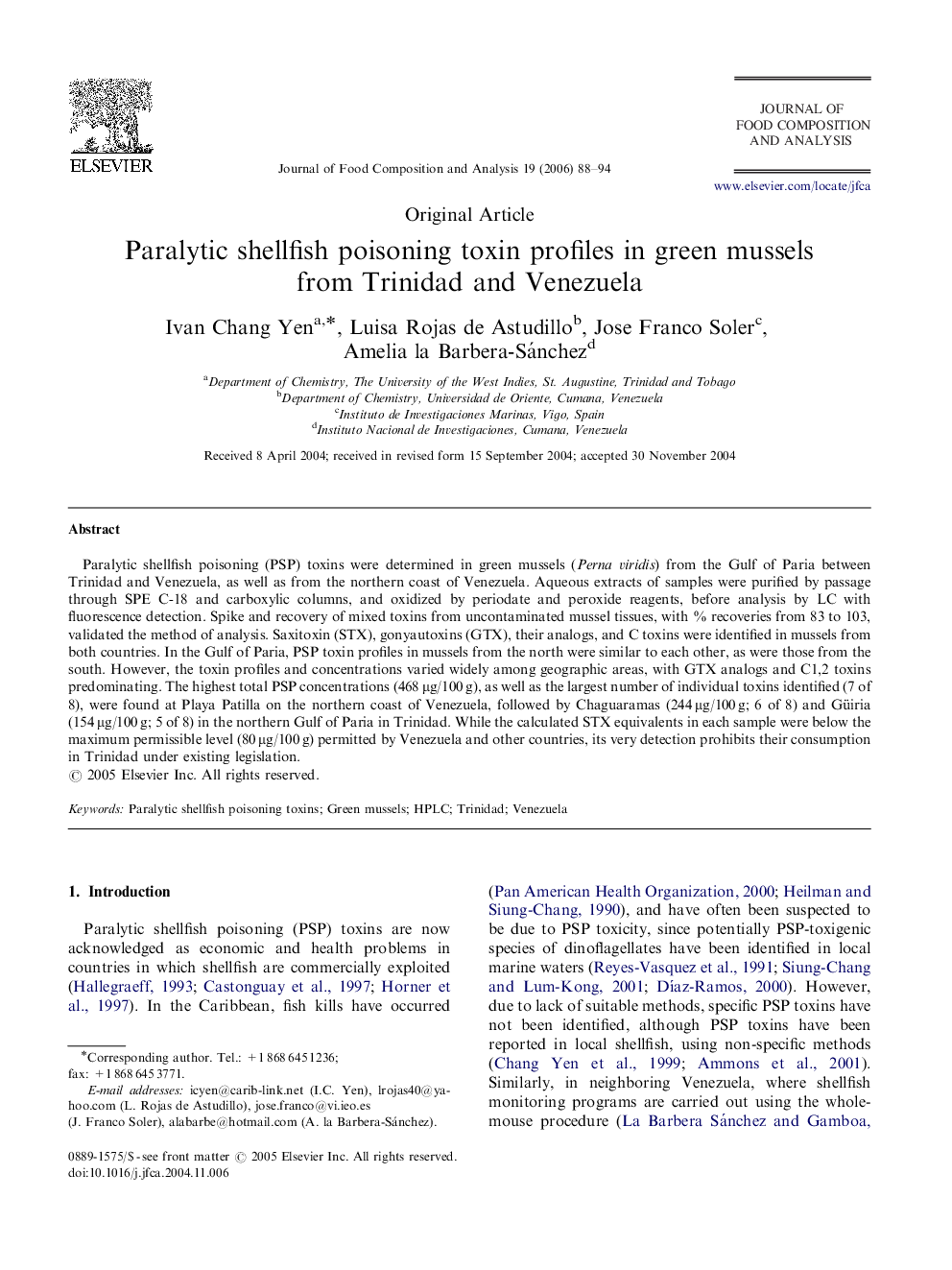| Article ID | Journal | Published Year | Pages | File Type |
|---|---|---|---|---|
| 1218930 | Journal of Food Composition and Analysis | 2006 | 7 Pages |
Paralytic shellfish poisoning (PSP) toxins were determined in green mussels (Perna viridis) from the Gulf of Paria between Trinidad and Venezuela, as well as from the northern coast of Venezuela. Aqueous extracts of samples were purified by passage through SPE C-18 and carboxylic columns, and oxidized by periodate and peroxide reagents, before analysis by LC with fluorescence detection. Spike and recovery of mixed toxins from uncontaminated mussel tissues, with % recoveries from 83 to 103, validated the method of analysis. Saxitoxin (STX), gonyautoxins (GTX), their analogs, and C toxins were identified in mussels from both countries. In the Gulf of Paria, PSP toxin profiles in mussels from the north were similar to each other, as were those from the south. However, the toxin profiles and concentrations varied widely among geographic areas, with GTX analogs and C1,2 toxins predominating. The highest total PSP concentrations (468 μg/100 g), as well as the largest number of individual toxins identified (7 of 8), were found at Playa Patilla on the northern coast of Venezuela, followed by Chaguaramas (244 μg/100 g; 6 of 8) and Güiria (154 μg/100 g; 5 of 8) in the northern Gulf of Paria in Trinidad. While the calculated STX equivalents in each sample were below the maximum permissible level (80 μg/100 g) permitted by Venezuela and other countries, its very detection prohibits their consumption in Trinidad under existing legislation.
